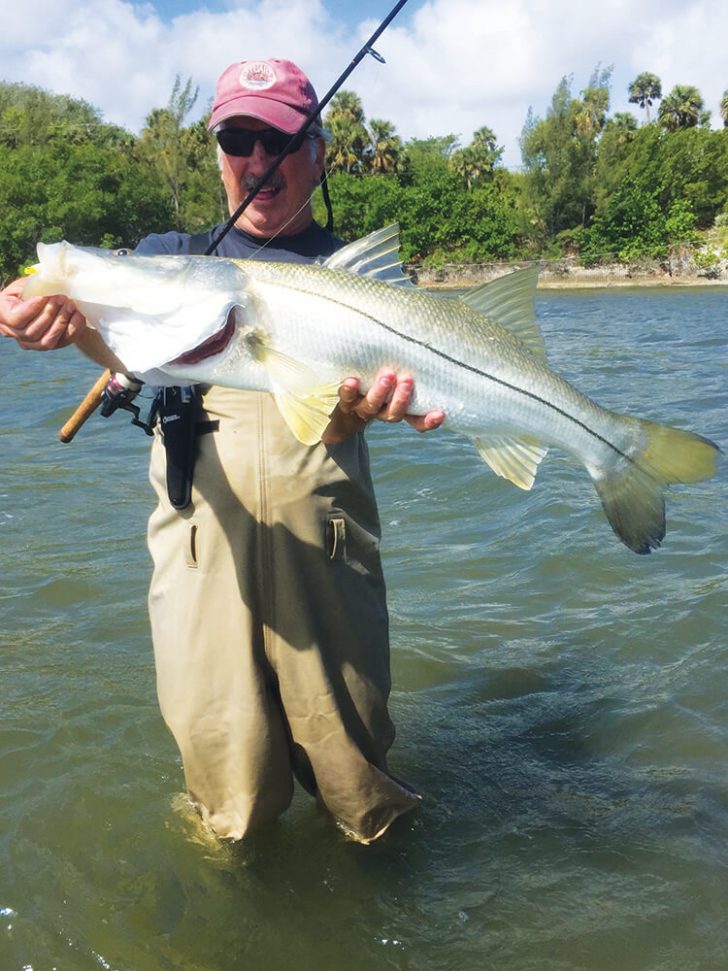Snook are one of the most sought after game fish in Florida. They are known for superior speed, strength, and jumping ability. They can be harvested certain months of the year with a special snook stamp and must be 28-32 inches in length. Snook that fit this 28- to 32-inch slot limit are big fish, averaging 5 to 10 pounds.
Snook like warm water and structure. In the area I fish, from Vero to Stuart to Jupiter, they are found in the lagoon primarily in shallow water around piers, mangroves, and bridges. Some of the bigger fish stay in the deeper water around the bridges. In summer they go out the inlets to cruise the ocean beaches and track down schools of bait.
There are dozens of great beaches to fish for snook. Two of the beaches I fish are Herman’s Bay and Tiger Shores. You need to look for bait. If there’s no bait, it’s better to move to another beach a mile away and try there.
The best time to fish is early in the morning. I use a 3/8-ounce jig with 4-inch paddletail, shallow running crankbaits, jerkbaits, and sometimes topwater. If it’s windy or rough, try a heavier jig head or a spoon.
To catch snook, do not cast out as far as you can. Cast at an angle along the shoreline in the first and second cuts. The first cut is where the waves break on the beach. Big snook will be in 1 to 3 feet of water, right under and behind the waves breaking on the shore. When the waves break, snook will follow in the wash right up to the sand. Keep your lure moving in a steady retrieve so you can feel the fish hit and set the hook. There’s so much wave action that the normal jerk-jerk-pause retrieve is unnecessary.
The last time I went to the beach, I hooked seven snook in 90 minutes. Of the seven, I only landed three. But one was a nice 25-inch fish.
The Indian River Lagoon and the St. Lucie River are prime areas for big snook. The largest snook are usually caught around bridges, usually at night by fishing deep with heavy jigs or TerrorEyz. During the day, fish the shadow lines of bridges and piers, since bait tends to hang out there. Once they leave the inlet and their deep-water haunts, snook head for shallow water around piers and mangroves. I’ve caught many big snook in skinny water either around structure or cruising the shoreline.
I prefer wading. I usually fish 1/16- or 1/8-ounce jigs with paddletails or topwater baits. Skip your jig under piers or mangrove limbs in the shadows. Then hang on. When a big snook busts your lure, there’s a good chance she’ll bust your line too.
Remember, harvesting snook is prohibited between Dec. 15 – Jan. 31 and June 1 – Aug. 31.
The Stuart Rod & Reel Club meets at 7 p.m. on the second Thursday of each month. For information, call 336-414-3440.
